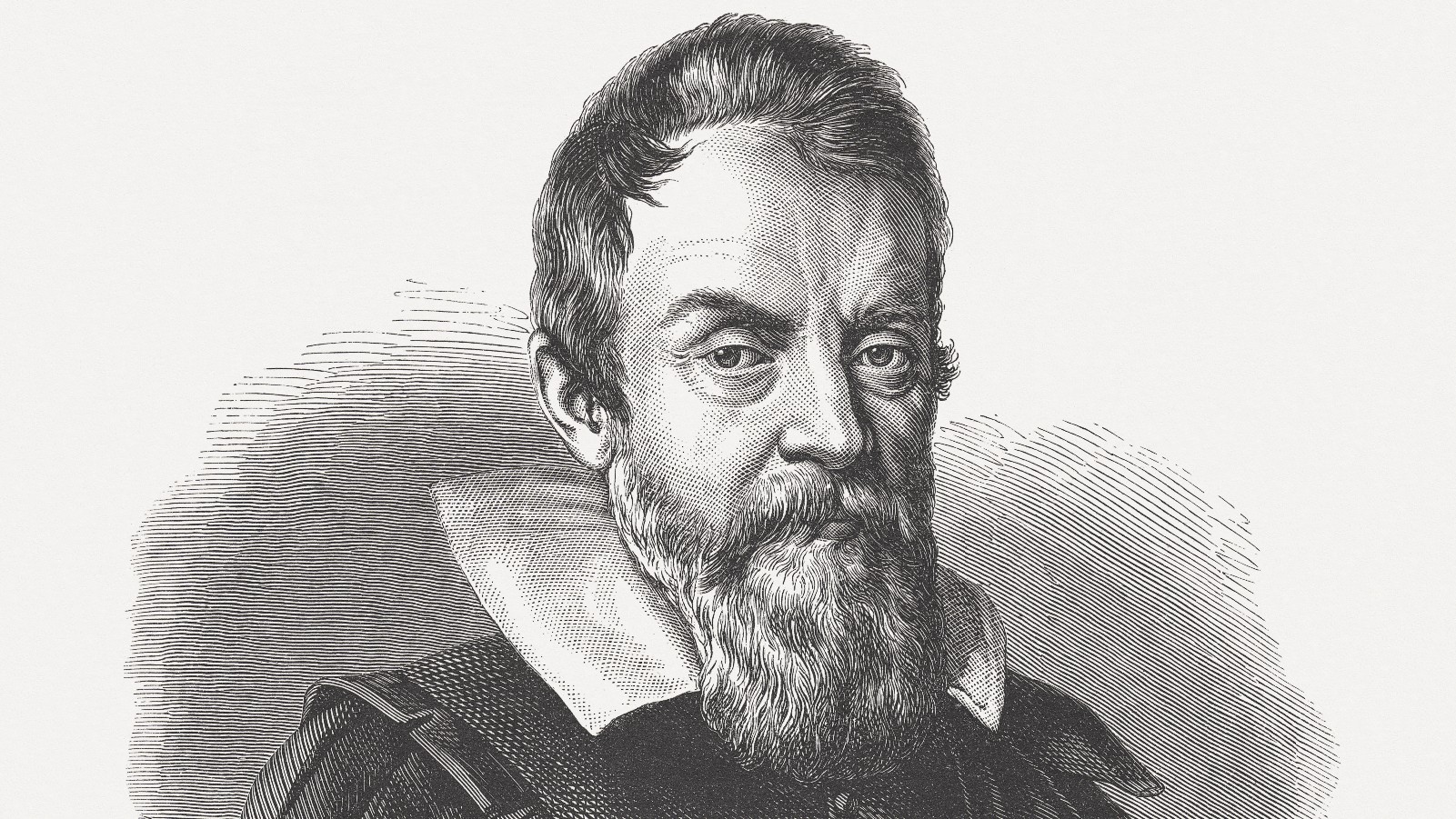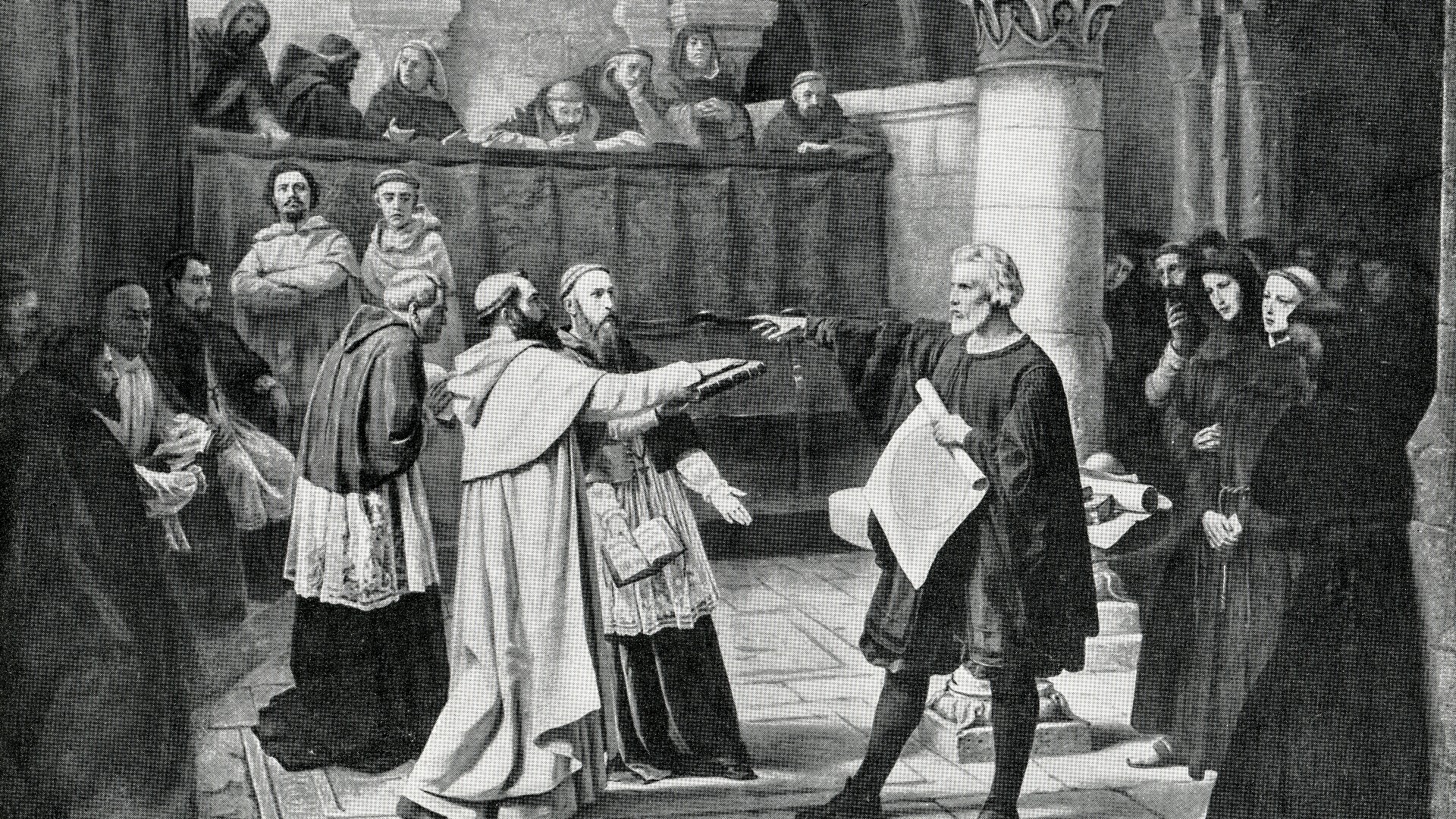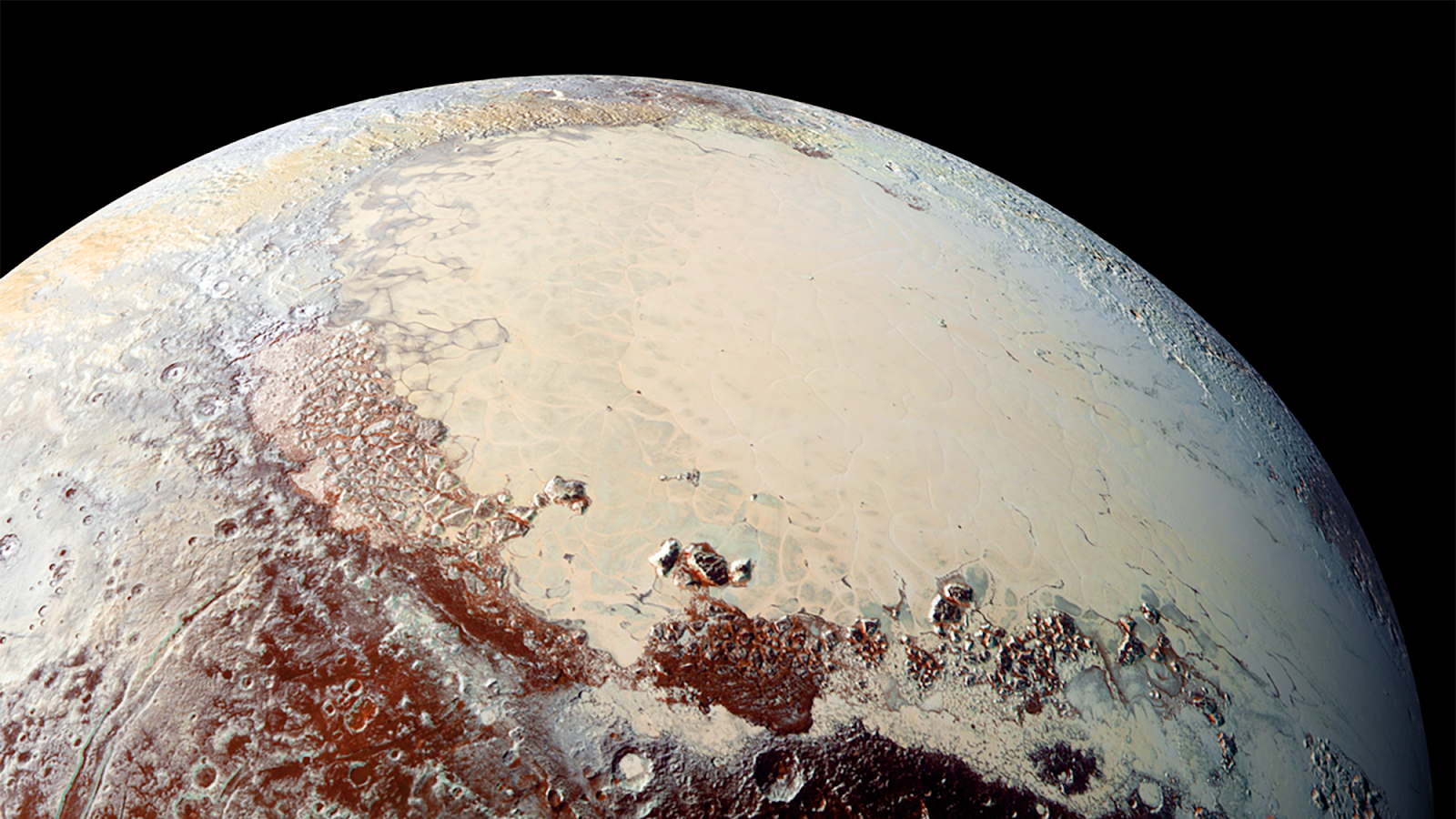Galileo Galilei: Biography, inventions & other facts
Galileo revolutionized our understanding of the universe

Italian astronomer Galileo Galilei provided a number of scientific insights that laid the foundation for future scientists. His investigation of the laws of motion and improvements on the telescope helped further the understanding of the world and universe around him. Both led him to question the current belief of the time — that all things revolved around the Earth.
[See also our overview of Famous Astronomers and great scientists from many fields who have contributed to the rich history of discoveries in astronomy.]
Galileo's Experiments
The Ancient Greek philosopher, Aristotle, taught that heavier objects fall faster than lighter ones, a belief still held in Galileo's lifetime. But Galileo wasn't convinced. Experimenting with balls of different sizes and weights, he rolled them down ramps with various inclinations. His experiments revealed that all of the balls boasted the same acceleration independent of their mass - although some modern physicists remain determined to prove him wrong. He also demonstrated that objects thrown in the air travel along a parabola.
At the same time, Galileo worked with pendulums. In his life, accurate timekeeping was virtually nonexistent. Galileo observed, however, that the steady motion of a pendulum could improve this. In 1602, he determined that the time it takes a pendulum to swing back and forth does not depend on the arc of the swing. Near the end of his lifetime, Galileo designed the first pendulum clock.
Galileo's Telescope
Galileo is often incorrectly credited with the creation of a telescope. (Hans Lippershey applied for the first patent in 1608, but others may have beaten him to the actual invention.) Instead, he significantly improved upon them. In 1609, he first learned of the existence of the spyglass, which excited him. He began to experiment with telescope-making, going so far as to grind and polish his own lenses. His telescope allowed him to see with a magnification of eight or nine times. In comparison, spyglasses of the day only provided a magnification of three.
It wasn't long before Galileo turned his telescope to the heavens. He was the first to see craters on the moon, he discovered sunspots, and he tracked the phases of Venus. The rings of Saturn puzzled him, appearing as lobes and vanishing when they were edge-on — but he saw them, which was more than can be said of his contemporaries.
Of all of his telescope discoveries, he is perhaps most known for his discovery of the four most massive moons of Jupiter, now known as the Galilean moons: Io, Ganymede, Europa and Callisto. When NASA sent a mission to Jupiter in the 1990s, it was called Galileo in honor of the famed astronomer.
Breaking space news, the latest updates on rocket launches, skywatching events and more!
In his book "Sidereus Nuncius" ("Starry Messenger"), published in 1610, Galileo wrote:
"On the 7th day of January in the present year, 1610, in the first hour of the following night, when I was viewing the constellations of the heavens through a telescope, the planet Jupiter presented itself to my view, and as I had prepared for myself a very excellent instrument, I noticed a circumstance which I had never been able to notice before, namely that three little stars, small but very bright, were near the planet; and although I believed them to belong to a number of the fixed stars, yet they made me somewhat wonder, because they seemed to be arranged exactly in a straight line, parallel to the ecliptic, and to be brighter than the rest of the stars, equal to them in magnitude . . . When on January 8th, led by some fatality, I turned again to look at the same part of the heavens, I found a very different state of things, for there were three little stars all west of Jupiter, and nearer together than on the previous night."
"I therefore concluded, and decided unhesitatingly, that there are three stars in the heavens moving about Jupiter, as Venus and Mercury around the Sun; which was at length established as clear as daylight by numerous other subsequent observations. These observations also established that there are not only three, but four, erratic sidereal bodies performing their revolutions around Jupiter."

Galileo may also have made the first recorded studies of the planet Neptune, though he didn't recognize it as a planet. While observing Jupiter's moons in 1612 and 1613, he recorded a nearby star whose position is not found in any modern catalogues.
"It has been known for several decades that this unknown star was actually the planet Neptune," University of Melbourne physicist David Jamieson told Space.com. "Computer simulations show the precision of his observations revealing that Neptune would have looked just like a faint star almost exactly where Galileo observed it."
Copernican System
In Galileo's lifetime, all celestial bodies were thought to orbit the Earth. Supported by the Catholic Church, teaching opposite of this system was declared heresy in 1615.
Galileo, however, did not agree. His research — including his observations of the phases of Venus and the fact that Jupiter boasted moons that didn't orbit Earth — supported the Copernican system, which (correctly) stated that the Earth and other planets circle the sun.

In 1616, he was summoned to Rome and warned not to teach or write about this controversial theory. But in 1632, believing that he could write on the subject if he treated it as a mathematical proposition, he published work on the Copernican system. He was found guilty of heresy, and was placed under house arrest for the remaining nine years of his life.
Today, Galileo is finally recognized for his groundbreaking discoveries, for which he is remembered as the "father of modern science".
Galileo Quotes
"And yet it moves."
"I have never met a man so ignorant that I couldn't learn something from him."
"I do not feel obliged to believe that the same God who has endowed us with sense, reason, and intellect has intended us to forgo their use."
"You cannot teach a man anything, you can only help him find it within himself."
"It is a beautiful and delightful sight to behold the body of the Moon."
"Wine is sunlight, held together by water."
— Find other quotes at GoodReads.com.
Additional resources
Join our Space Forums to keep talking space on the latest missions, night sky and more! And if you have a news tip, correction or comment, let us know at: community@space.com.

Nola Taylor Tillman is a contributing writer for Space.com. She loves all things space and astronomy-related, and always wants to learn more. She has a Bachelor's degree in English and Astrophysics from Agnes Scott College and served as an intern at Sky & Telescope magazine. She loves to speak to groups on astronomy-related subjects. She lives with her husband in Atlanta, Georgia. Follow her on Bluesky at @astrowriter.social.bluesky
